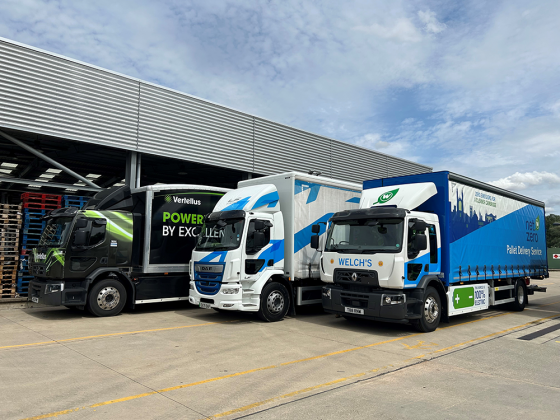Industry insight
John Lewis, chief executive of the BVRLA shares figures from a new study into the scale of the vehicle rental and leasing industry
 As a representative trade body responsible for campaigning and lobbying on behalf of the vehicle rental and leasing sector, it can be a challenge explaining just how big the industry is.
As a representative trade body responsible for campaigning and lobbying on behalf of the vehicle rental and leasing sector, it can be a challenge explaining just how big the industry is.
We often have to resort to throwing in the names of some of our larger, better-known members – Alphabet, Avis, Europcar, Hertz, LeasePlan, Lex Autolease, Northgate or Ryder, for example – but this still doesn’t give people an accurate perception of the scale and scope of the whole sector. This is an issue because, when it comes to fighting the corner for your industry, size does matter.
We have now addressed this problem. A major new study from respected research organisation Oxford Economics provides the vehicle rental and leasing industry with some excellent credentials.
So what is the big picture?
The vehicle rental and leasing sector contributes around £14bn a year to the UK economy. This is equivalent to £1 in every £90 of UK GDP or the combined local economies of Bath and Bristol.
This figure takes into account the operations of the industry itself, the UK‑made vehicles and engines it purchases, the activity of UK dealerships and its impact on the used car market.
This economic activity supports over 183,000 jobs, or 1 in every 175 in the UK. In the process, the sector generates around £2.8 billion of tax revenue per year.
The UK automotive sector is proudly extolled as one of this country’s few manufacturing success stories. Vehicle rental and leasing companies are among its largest customers, purchasing an estimated 220,000 vehicles in 2011 – 15 per cent of output and a whopping 82 per cent of UK manufactured vehicles sold domestically.
This expenditure is estimated to have supported a £2.4 billion contribution to GDP, 52,000 jobs and £810 million in tax receipts.
In the same year, the vehicle rental and leasing industry’s expenditure on foreign‑made vehicles containing UK-made engines is estimated to have generated a £349 million contribution to GDP, 7,600 jobs and £120 million in tax receipts.
Motor dealer business
The vast majority of this business is conducted through motor dealers. In 2011, the sector purchased £11.1 billion of foreign‑made vehicles from UK dealerships. This activity supported a £98 million contribution to GDP, 2,000 jobs and £31 million in tax receipts.
There is also a positive environmental angle to this activity. The industry can rightfully claim to play a leading role in driving down emissions. At 123g/km, the CO2 emissions of the average lease car registered in 2012 was more than 20 per cent cleaner than the average car on UK roads.
Not everything is measurable, but the researchers at Oxford Economics have established that the sector makes a major contribution to the efficiency with which the UK economy works.
As well as giving businesses access to modern, fuel-efficient vehicles, fleet management services and lower capital costs, vehicle leasing can also provide a range of ‘housekeeping’ services, including maintenance, insurance and road tax – freeing up resources and working capital for other tasks. It reaches every sector of the economy, from manufacturing and construction to retail and health. The research helps us to dispel the myth that vehicle leasing is predominantly used for tax-efficiency reasons by big business fleets. Two thirds of the industry’s business customers are SMEs.
Positive outlook for commercial vehicle rental and leasing
Nearly 60 per cent of commercial vehicle rental and leasing companies are forecasting a pick-up in business this year, with just 10 per cent expecting the market to deteriorate, according to the early findings of CV Informer, a new research project being undertaken by the BVRLA and Road Transport Media.
However, this optimism may take a while to translate into increased vehicle purchases, with respondents suggesting that they are likely to purchase fewer trucks and vans over the next twelve months than they did in the previous twelve.
In terms of fleet demographics, the findings suggest that the rental and leasing fleet is evenly distributed across light, heavy and medium trucks, with Iveco, Scania and DAF the preferred vehicle suppliers.
Similarly, the van fleet was fairly evenly distributed across the weight range, with medium vans (1.8t to 2.6t GVW) making up the largest segment. Ford, Volkswagen and Mercedes dominated the market with a near 70 per cent share of registrations.
The final CV Informer report is due to be published in May/June.
Further information
www.bvrla.co.uk






